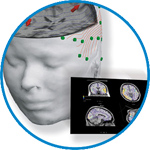- Home
- About ANT
-
Products

asa
asa is a highly flexible EEG/ERP and MEG analysis package with a variety of source reconstruction, signal analysis and MRI processing features.
.jpg)
eego mylab
The new frontier in multimodal brain research. With up to 16 kHz sampling rate, 256 EEG channels and unique software features, eego mylab gives you an unprecedented in-depth understanding of the human brain.

eego sports
eego sports offers complete freedom to collect high-density EEG data, bipolar EMG signals, and a variety of physiological sensor data, wherever and whenever required, with publish quality data in less than 15 minutes!

waveguard net
The waveguard net sets a new standard for research applications requiring high-density EEG data acquisition with quick preparation time, high flexibility, and subject comfort.

visor2
Our new and upgraded visor2 solutions integrate all the latest technologies for navigated rTMS, dual-coil navigation support, EEG-TMS recordings and pre-surgical evaluation for the highest quality in research and clinical procedures.

powerMAG ANT
The PowerMAG ANT 100 rTMS stimulator is designed for the specific needs of high-end TMS applications. Powerful high-frequency TMS as well as high precise single pulse and repetitive pulse protocols are combined in one single device.

xensor
xensor offers the solution for digitization of 3D electrode positions. xensor takes care of the whole procedure; it records, visualizes and stores positions acquired with a dedicated digitizer.

waveguard original
waveguard original is the cap solution for EEG measurements compatible with fMRI, MEG and TMS system. Use of active shielding guarantees performance in even the most demanding environments.

waveguard connect
waveguard connect EEG caps are a perfect match for hospitals and institutes aiming at reliable EEG, maximum uptime and great patient comfort! For optimal signal quality, the electrodes are made of pure, solid tin.

waveguard touch
waveguard touch is a dry electrode EEG cap. The unique Ag/AgCl coated soft polymer electrodes provide stable, research-grade EEG signals while maintaining subject comfort. The combination of these innovative dry electrodes and the industry-leading waveguard cap makes waveguard touch the best solution for dry EEG.

smartmove
smartmove allows planning of a complete TMS session ahead by defining stimulation sites based on anatomical MRI information and functional information like fMRI, PET or EEG/MEG.
Stay - References
- Support
- Events
- News
- Contact Us
You are here
Schizotypy dimensions are associated with altered resting state alpha connectivity
Schizotypy dimensions are associated with altered resting state alpha connectivity
The disconnection hypothesis of schizophrenia says that symptoms are explained by dysfunctional connections across a wide range of brain networks. Despite some support for this hypothesis, there have been mixed findings. One reason for these may be the multidimensional nature of schizophrenia symptoms. In order to clarify the relationship between symptoms and brain networks, the current study included individuals at risk for schizophrenia-spectrum disorders who either report extreme levels of positive schizotypy traits (perceptual aberrations and magical ideation, or “PerMag”; n = 23), or an extreme negative schizotypy trait (social anhedonia, or “SocAnh”; n = 19), as well as a control group (n = 18). Resting-state alpha electroencephalography was collected, and functional networks for each subject were measured using the phase-lag index to calculate the connectivity between channel pairs based on the symmetry of instantaneous phase differences over time. Furthermore, graph theory measures were introduced to identify network features exclusive to schizotypy groups. We found that the PerMag group exhibited a smaller difference in node strength and clustering coefficient in frontal/occipital and central/occipital regional comparisons compared to controls, suggesting a more widespread network. The SocAnh group exhibited a larger difference in degree in the central/occipital regional comparison relative to controls, suggesting a localized occipital focus in the connectivity network. Regional differences in functional connectivity suggest that different schizotypy dimensions are manifested at the network level by different forms of disconnections. Taken together, these findings lend further support to the disconnection hypothesis and suggest that altered connectivity networks may serve as a potential biomarker for schizophrenia risk.

 Read more
Read more.jpg)




